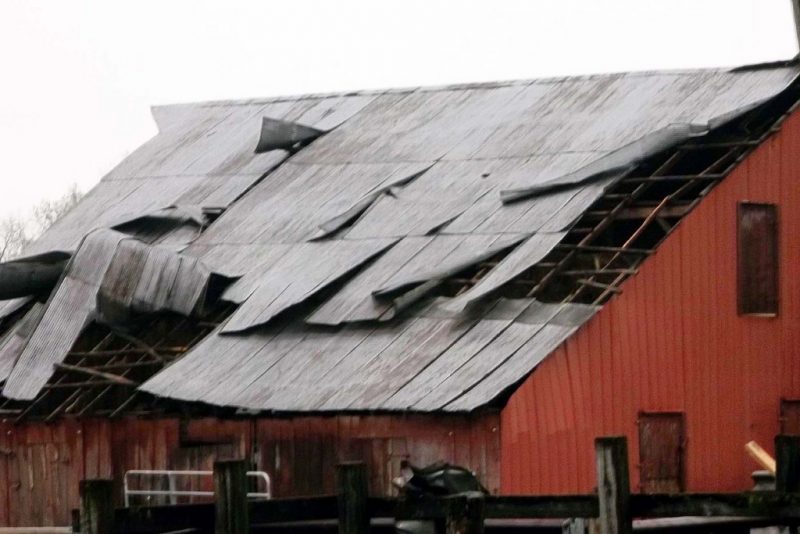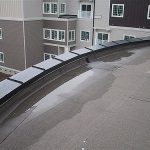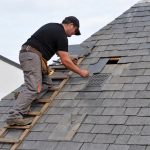Home Roofing Repairs: Dealing with emergency roof repairs
“There’s always another storm. It’s the way the world works. Snowstorms, rainstorms, windstorms, sandstorms, and firestorms. Some are fierce, and others are small. You have to deal with each one separately, but you need to keep an eye on what’s brewing for tomorrow.” – Maria V. Snyder, Fire Study
Climate change and its associated severe weather events have started causing havoc across the world. These events, in turn, destroy infrastructure like homes, roads, and bridges in human settlements. They also destroy the natural ecosystem and the forests, trees, insects, animals, and plants that form a vital part of the natural world.
Therefore, several questions can be asked and answered as a response to this discussion’s opening statements. However, the most pertinent questions are as follows:
- How do you weatherproof your home to survive most of these storms as intact as possible?
- How do you deal with emergency repairs, especially emergency roof repairs, caused by severe weather events like hailstorms, high winds caused by a tropical storm, hurricane, or winter storm?
Before we look at answers to these questions, let’s define severe weather events and climate change. Then, we’ll consider why climate change is causing such destructive weather.
Climate, climate change, and severe weather events
Succinctly stated, according to the climate.nasa.gov website, the climate is defined as the “the long-term regional or even global average of temperature, humidity and rainfall patterns over seasons, years or decades.”
Moreover, climate change is the medium- to long-term changes in the standard weather patterns that were typical to the specific region.
Severe weather, on the other hand, is caused by climate change and global warming as a result of an increase in greenhouse gasses. These weather events are atypical when considered in the light of a region’s historical climate. And, they include destructive storms like typhoons, hurricanes, tropical storms, and winter storms, fires, heatwaves, and famine conditions caused by extreme heat and drought.
The consequences of severe weather: A case study

Hailstones can cause severe damage to your roof in a blink of an eye.
Even though this article’s focus is not how to save the planet by reversing the disastrous consequences of climate change caused by global warming and an increase in greenhouse gasses, it is worth noting that, because the severe weather events are primarily caused by global warming.
And, as a result, it becomes an imperative to not only stop the adverse effects of climate change, it also becomes essential to put measures into place to reverse climate change. If for no other reason than to halt the destruction of human settlements and the loss of life caused by these severe weather events.
Now that we have an understanding of climate change, severe weather, global warming, and the negative consequences caused by these three elements, let’s look at the destructive nature of a severe weather event like a hailstorm. And, the best way to understand the destructive nature of a severe weather event is to examine the following case study:
On 11 January 2020, the Chief Meteorologist for the San Antonio area, Chris Suchan, alerted the residents to the possibility of “severe storms moving in… bringing possible large hail, heavy rain, and damaging winds.”
He noted that the storms would probably consist of the following elements:
- Two-inch and greater sized hailstones.
- Damaging winds including gusts of up to 58mph
- Isolated tornados
- Heavy rain
Consequently, it is reasonable to assume that the damage caused by massive hailstones and strong winds to your home has the potential to be substantial.
Thus, based on this statement, the following questions deserve considered answers.
What are hailstones and strong winds, and how do they cause so much damage?
Additionally, the question of why is it important to understand how hailstones and high winds cause so much damage to your home and surrounding areas is also valid?
The concise answer to the “why” question is answered by quoting the age-old adage, “scientia potentia est” or “knowledge is power.” Additionally, it is worth noting that this quotation is as relevant today as it was in 1597 when it was first attributed to Francis Bacon.
Let’s now consider what hailstones and strong winds are, and how and why they have the potential to wreak havoc on human settlement areas, including agricultural lands.
Hailstones and their destructive nature
The nssi.noaa.gov website defines hail as a “form of precipitation consisting of solid ice that forms inside thunderstorm updrafts… [or cumulonimbus clouds].”
A cumulonimbus cloud is a dense, tall, vertical cloud that forms when water vapour is carried upwards from the earth into the sky by powerful air currents. Additionally, cumulonimbus clouds also form when hot, dry air meets cooler moist air; thus, turning the humid air into raindrops.

Heavy storms and winds can easily blow out an entire roof system, especially if it was not properly installed.
Depending on the strength of the updrafts, these clouds can grow so tall that they reach the frigid areas of the atmosphere. Consequently, providing a perfect breeding ground for the development of hailstones.
And, hailstones grow in size by colliding with liquid raindrops as they rise and fall in the storm cloud’s updrafts. The longer the hailstone remains in the cloud, the larger it grows. Until it becomes too heavy for the cloud’s updrafts and falls out of the cloud; thus, the stronger the thunderstorm’s updrafts, the longer the hailstorm stays inside the cloud and the larger it will grow.
Finally, the strong storm updrafts are caused by the earth’s scorching surface temperature. In layman’s terms, the hotter the earth’s surface temperature, the higher the risk of a destructive storm developing.
As an aside, it is interesting to note that, at the beginning of the twenty-first century, NASA observed that the earth’s temperature was about 0.5 degrees Celsius higher than that of the latter half of the twentieth century. This fact, in itself, is a reason for an increase in the number of severe, destructive thunderstorms across the globe.
By referring once again to the nssi.noaa.gov website, we can determine the destructive abilities of a hailstone relative to its size. The largest recorded hailstone fell in “Vivian, South Dakota, on June 23, 2010.” It had an 8-inch diameter and weighed just over one pound.
Small hailstones do not cause much damage; however, the larger-sized hailstones are capable of causing death or injury to animals and people, destroying houses by breaking windows, smashing holes in roofs, and damaging walls.
Additionally, these hailstones are capable of destroying agricultural crops and animal grazing by smashing these crops to pieces. Finally, the destructive nature of a large hailstone is made worse by strong winds. These winds are capable of blowing the hailstones sideways into the sides of cars, houses, animals, and people.
It is difficult to calculate the force of hailstones caused by their falling speed versus their size. However, scientists have estimated that a 2- to 4-inch in diameter hailstone as found in a supercell or severe thunderstorm, has a fall speed of between 44 and 72mph. It is not difficult to imagine the possible damaged caused by hailstones falling at this speed. This speed will also increase exponentially, the stronger the wind is.
As an aside, to visualize the size of a 2.5-inch hailstone, it is worth noting that it is a similar size to a tennis ball.
Never ignore your roof system’s wearing signs!
Your roof system will literally send signs and messages of its deterioration and condition. Attending them in time can save you time and money.
What to do when a hailstorm as passed over your residential area: A case study
Now that we have considered the cause and formation of a severe weather event like a hailstorm and the extent of its destructive nature and ability, let’s look at ways to deal with the aftermath of a such a storm. Additionally, it is also worth considering putting a few pre-emptive measures into place before the storm strikes. However, there is very little you can do to prevent hail and wind damage from a supercell thunderstorm.
Again, the simplest way of describing the aftermath and consequences of a hailstorm is to cite an actual example as a case study.
At the outset of this case study, it is essential to note is that modern meteorological models can predict the arrival of a supercell thunderstorm that includes the possibility of hailstones greater than two inches in diameter.
These early warning systems will enable you to take shelter, ensure that your pets and domestic farm animals are brought in from outside and are situated under cover, and make sure your motor vehicle is under protection as well.
For the sake of this discussion, let’s assume that you live in Denver, and were struck by the severe thunderstorm. The hailstones smashed holes in your home’s roof tiles as well as the wooden struts that the tiles are laid on.
Your roof is constructed from slate tiles, and the heavy wind that is part of the storm is blowing both the broken slate tiles and other tiles off the roof. The heavy rain is pouring into your home through the holes in the ceiling.
Therefore, the question that begs is how do you cover your roof in an emergency to reduce the damage to your home’s interior?
By way of answering this question, let’s consider the following points:
First, implement emergency measures
The concise answer to this question is that you hire the best home roofing contractors to implement emergency measures to cover your home’s roof before they come and fix the damage done to your roof.
However, the storm might not be over by the time you need help. Therefore, fixing your home’s roof will be in two parts: an emergency fix to cover the holes, and a restoration of the smashed roof batons and tiles when the storm is over.
Hire a quality roofing company

Don’t try to perform and emergency fix yourself. Hire a professional company.
These two points must occur simultaneously. And, then once the storm is over, not only will your Denver roofing company repair the damage, they will also help you submit the insurance claims to cover the cost of the repairs.
The reason receiving assistance with the insurance claims is such a benefit is because dealing with extensive damage to your property is very stressful. And, the more other people help you, the more your stress levels will reduce.
There are few things worse than cleaning up a flooded home. And, being in the situation where you are a victim of a severe hailstorm might result in short-term Posttraumatic Stress Disorder (PTSD). Therefore, hiring a roofing company to help with one aspect of the cleanup and damage repair will go a long way to reducing the possibility of such high stress levels that they could result in short- to long-term mental health challenges.
Consider installing storm-resistant roofing measures
While it is probably tough to prevent any storm damage from a supercell thunderstorm, there are measures you can put into place to reduce the storm’s devastating effects.
For example, if at all possible, instead of replacing expensive slate tiles, consider the option of replacing the roof with modern asphalt shingles and wooden sheathing that is thicker than the minimum standard. The rationale behind this is that the thicker the wood that holds the roofing nails, the less chance of the tiles being blown off the roof.
Secondly, for the wind to start lifting the roof on its own without hail damage, it needs to get between the roof tiles and the roof sheathing or batons. Thus, to prevent this scenario from occurring, increase the width of the installed metal drip edges. And, increase the number of roofing nails used to hold the metal drip edge in place. Both of these suggestions will go a long way towards keeping the roof in place during high winds.
Final thoughts
Unfortunately, at the moment, severe weather events seem to be a reality based on the fact that the global population’s leaders seem to lack the political will to implement measures to reverse the devastating effects of climate change caused by global warming. This seems true even though young climate activists are taking up the fight against the continued use of fossil fuels as a primary power generation source.
Therefore, according to the quotation mentioned above by Maria Snyder, there will always be another storm. The salient point is to deal with each storm individually and not to worry about the next severe weather event.
And finally, be sure to call your roofing specialists in an emergency. You won’t be sorry.
Never ignore your roof system’s wearing signs!
Your roof system will literally send signs and messages of its deterioration and condition. Attending them in time can save you time and money.



You must be logged in to post a comment.